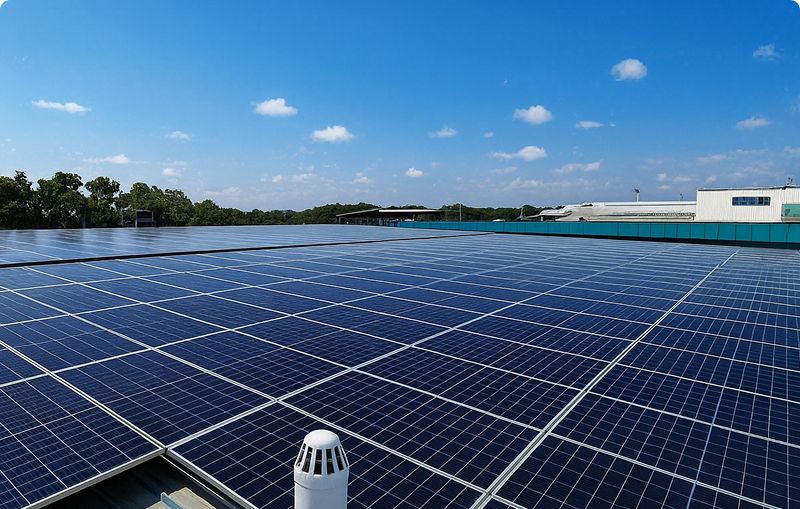Pivot Green Investor FAQ

Pivot Green – Investor FAQ
1. What exactly am I investing in?
You’re investing in a share of the revenue generated by a fully operational rooftop solar plant in Singapore, with a capacity of 267.85 kWp. The project sells clean power to Freight Links Pte Ltd under a 25-year Power Purchase Agreement (PPA).
Investors buy Fractionalized Investment Tokens (FITs) - digital tokens that represent real-world investment agreements between investors and the asset operator. Each FIT gives you the right to receive yield payments from the project’s income streams.
2. Why does this opportunity matter now?
Singapore’s Green Plan 2030 mandates solar adoption on industrial rooftops, creating long-term, policy-backed demand for clean energy infrastructure. Yet most projects remain accessible only to large institutions.
Pivot Green bridges that gap - allowing crypto and DeFi investors to earn from solar assets while supporting the country’s renewable transition.
3. What are FITs?
Fractionalized Investment Tokens (FITs) represent real-world investment agreements between investors and recipients, giving holders access to yield payments.
4. How do I earn returns?
Returns come from two sources:
- Fixed income: long-term monthly payments from Freight Links under the 25-year PPA.
- Variable income: from the sale of Renewable Energy Certificates (RECs) on Singapore’s accredited REC marketplaces.
Your share of these combined revenues is distributed monthly, in USDC via Solana smart contract, based on the number of FITs you hold.
5. What is the expected return?
The project targets a 16.8 % Internal Rate of Return (IRR) over its 24-year term.
This projection is based on energy production and REC pricing assumptions. Actual results may vary with energy output and market conditions.
6. What is IRR, why is it important, and what can I compare it to?
IRR (Internal Rate of Return) measures the annualized rate your investment earns over its full lifetime, factoring in compounding returns and payout timing. It’s the gold-standard metric used in infrastructure and private equity to gauge long-term profitability.
Pivot Green’s projects a 16.8 % IRR. For context, most renewable infrastructure projects in Southeast Asia yield between 8–12 %, while typical DeFi stablecoin strategies typically offer 5–10%.
And here’s what makes it powerful: unlike typical long-lock investments, Pivot Green’s project generates monthly on-chain cash flow. That means you’re not waiting years for returns, you start seeing yield every month in USDC, that can be reinvested and compounded over time.
To better understand IRR and vosialise it’s potential → go to the ‘calculate your returns’ tab, in the project listing page: https://app.refihub.io/investments/8/
7. How long does this investment last?
The solar plant operates under a 24-year revenue contract running until 2049.
8. What are Renewable Energy Certificates (RECs)?
Renewable Energy Certificates (RECs) are digital certificates that prove 1 megawatt-hour (MWh) of electricity was generated from a renewable source, such as solar.
They’re used by companies to meet sustainability or carbon-neutrality goals, even if they can’t install solar panels themselves.
Pivot Green’s solar plant produces RECs from the clean power is generates, and these certificates can be sold for extra income alongside electricity sales.
9. How are RECs monetized?
In simple terms: RECs are sold to buyers who want to offset their carbon footprint. Here’s how it works:
- The solar plant registers with accredited REC platforms (like SP Group or Redex) that verify its clean energy output.
- For every MWh produced, a REC is issued.
- Businesses buy these RECs to “claim” the environmental benefit of that clean power — for example, to meet RE100 or carbon reporting standards.
- The revenue from those sales adds an extra 20–40% of income to the project, boosting overall returns for investors.
Think of RECs as digital receipts for clean energy, turning environmental impact into real financial value.
10. What are the main risks, and how are they mitigated?
There are several risk in terms of operations that also have their mitigation strategies.
For clarity, see them in the listing page ‘Model & Risks’ tab.
https://app.refihub.io/investments/8/
11. Who is behind this project?
Pivot Green is led by an experienced team in renewables, finance, and tokenization:
- Caius Lai (CEO): 10 years in M&A and family-office renewables; ex-Sinarmas Group solar BU.
- Richard Loi (Chairman): ex-Deloitte Partner; co-founder of ecoCarbon (960 k ha forestry).
- Benny Zheng (COO): 20 + years in SEA renewable supply chain; ex-Canadian Solar.
- Jien Lit (CFO): Investment lead at Sinarmas Singapore family office.
- Tristan Yver (Advisor): Co-founder of Backpack & expert in crypto asset tokenization.
12. Where is the solar plant located?
📍 1.3359030, 103.9718132 (Singapore)
It’s located on the rooftop of a Freight Links industrial facility.
13. How will the funds be used?
Funds raised go 100 % toward acquiring revenue rights in the operational solar asset.
Given the plant is operational there is no construction needed. Maintenance costs are covered by Pivot Green’s cut.
14. How does the investment process work?
- Invest USDC through ReFi Hub on Solana.
- Receive your FITs representing fractional ownership of the revenue stream.
- When the raise closes, smart contracts start distributing monthly USDC yields directly to your wallet.
15. When do returns start being paid?
The first investor payout is scheduled for November 25th, 2025, approximately one month after the fundraising closes.
16. How are payouts made, and how often?
Yields are paid monthly (between the 23rd and 28th of each month) in USDC through smart contracts.
17. How is performance tracked and reported?
Revenues are recorded on-chain and investors receive monthly performance summaries.
Energy generation data is tracked through an external monitoring platform, and shared with investors. ReFi Hub is developing direct API integration for live, transparent tracking inside the ReFi Hub dashboard.
18. What legal rights do investors have?
FIT holders have contractual rights to a share of revenue from the project, under legally binding investment agreements. The underlying solar equipment serves as collateral, reinforcing recoverability if the case of default.
19. What happens if the offtaker defaults or delays payment?
The 25-year PPA is with a subsidiary of an SGX-listed company. In the unlikely event of a payment default, Pivot Green retains ownership of the solar system and can redirect output or reassign the PPA to a new buyer.
20. What is the insurance coverage?
The asset is covered by comprehensive insurance for damage, theft, and liability. Pivot Green manages claims and repairs directly - to restore generation quickly and protect investor cash flows.
21. What happens at the end of the 24-year period?
At contract maturity, final revenues are distributed to investors. Pivot Green may repower the site with new panels or dispose of components responsibly.
22. How is the asset’s lifetime managed?
Pivot Green manages all operations and maintenance (O&M) internally, including panel cleaning, performance monitoring, and inverter replacement. End-of-life panels will be recycled through certified e-waste partners.
23. How does this compare to other RWA or DeFi yield opportunities?
Pivot Green’s targets 16.8**% IRR,** in the long term this exceeds most DeFi stable coin yields because of the ability to reinvest cashflows.
To understand this more deeply, go to the listing page to see a model comparing this IRR with a DeFi USDC lending strategy.
24. Where can I learn more or invest?
Visit https://app.refihub.io/investments/8/ to explore Pivot Green’s listing.


